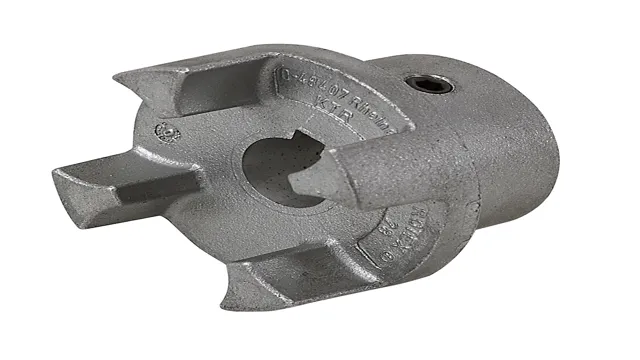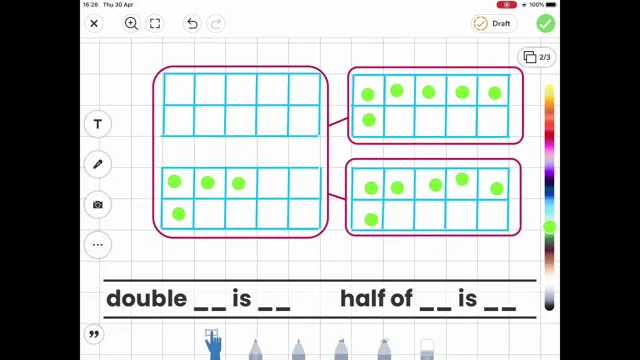Have you ever struggled with quickly calculating fractions? It can be daunting to try and solve them in your head, especially if the numbers aren’t easily divisible. But fear not, because we’ve got a quick and easy solution for you: half of 11 1 First off, let’s break it down.
Half means dividing by 2, and 11 16 is a fraction, specifically 11 out of 1 So, half of 11 16 simply means dividing 11 16 by Now, to make this even simpler, we can convert 11 16 into a decimal.
To do this, we divide the numerator (11) by the denominator (16), which gives us 0.687 So, half of 11 16 is equivalent to half of 0.
6875, which is 0.3437 See how easy that was? By breaking down the problem and converting the fraction into a decimal, we were able to quickly calculate half of 11 1
Remember, when dealing with fractions, don’t be intimidated – just take it one step at a time and before you know it, you’ll be a fraction-pro!
Understanding Basic Math Concepts
If you’re wondering what half of 11/16 is, the answer is 5/1 Understanding fractions and their relationships to whole numbers can be confusing, but once you get the hang of it, it becomes much easier. When dividing a fraction by 2, simply divide the numerator (the top number) by 2 and keep the denominator (the bottom number) the same.
In this case, half of 11/16 would be 11/32, which can be simplified to 5/1 It’s important to grasp these basic math concepts as they are foundational skills that will serve you well in more advanced math courses and in life.
What is Fraction?
Fraction Fractions are used in math to represent parts of a whole. They are expressed as a number over another number, separated by a horizontal line, and the bottom number represents the total number of equal parts the whole has been divided into. For example, ¼ means that the whole has been divided into 4 equal parts and we are representing one of those parts.
The numerator (top number) indicates how many parts we have and the denominator (bottom number) indicates how many total parts there are. Fractions can also be expressed as decimals or percentages, making it easier to compare different fractions. Fractions are used in many everyday situations, such as recipes, measurements, and finances.
Understanding how to work with fractions is an essential math skill that will be used throughout life.

What is the Numerator and Denominator?
When it comes to basic math concepts, understanding the numerator and denominator is crucial. In simple terms, the numerator refers to the top part of a fraction, while the denominator is the bottom part. Commonly represented as a/b, the numerator represents the number of equal parts that are being considered, while the denominator represents the total number of equal parts in a whole.
For example, if we consider a pizza with eight slices and we want to know how many slices we have eaten, the number of slices eaten is the numerator and eight is the denominator. The importance of understanding the numerator and denominator is that they are the building blocks for more complex mathematical concepts. Without this understanding, it becomes difficult to grasp more complicated mathematical functions.
By understanding these concepts, we can gain an appreciation for the language and structure of mathematics that will aid in our future learning.
Dividing Fractions
If you’re wondering what half of 11/16 is, the answer is 5/1 To divide fractions, you’ll need to invert the second fraction and multiply it by the first. In this case, you’d have 1/2 ÷ 11/16, which is the same as 1/2 x 16/1
When you multiply the numerators (1 x 16), you get 16, and when you multiply the denominators (2 x 11), you get 2 Simplify the fraction by dividing both the numerator and denominator by their greatest common factor, which is This gives you 8/11 as the answer.
But don’t forget, the prompt is asking for half of 11/16– so divide 8/11 in half by dividing the numerator by 2 and leaving the denominator as is. The final answer is 5/1
Step-by-Step Guide to Dividing Fractions
Dividing Fractions Dividing fractions can seem daunting at first, but with a step-by-step approach, it can be simple. To divide fractions, you must invert the second fraction and multiply it by the first fraction. For example, if you want to divide 3/4 by 1/2, you would invert 1/2 to get 2/1 and then multiply it by 3/
Multiplying across would give you 6/4, simplifying that fraction to 3/ Therefore the answer to 3/4 ÷ 1/2 is 3/ Remember, it’s essential to simplify your answer whenever possible.
Ensure you reduce your fraction to the lowest possible terms. If there’s a common factor between the numerator and denominator, reduce it. Dividing fractions is useful in many real-life scenarios and can assist you in many math-related problems.
Understand the steps, practice solving different fractions, and you’ll be dividing fractions with ease.
Cross-Multiplication Method
Dividing fractions can be confusing and challenging for many students, but the cross-multiplication method can make it much simpler. This method involves multiplying the numerator of one fraction by the denominator of the other and vice versa, then simplifying the resulting products. For example, to divide 2/3 by 4/5, we would multiply 2 by 5 to get 10 and multiply 3 by 4 to get 1
Then we would simplify by dividing 10 by 12, which gives us 5/6 as the solution. This method can also be used to compare fractions by finding which one is bigger or smaller. By understanding and mastering the cross-multiplication method, dividing fractions becomes a breeze!
Simplifying the Result
Dividing fractions may seem like a daunting task, but it doesn’t have to be. The key to simplifying the result is to remember that dividing by a fraction is the same as multiplying by its reciprocal. First, flip the second fraction over and then multiply the two fractions together.
For example, if you want to divide 3/4 by 1/5, you would flip 1/5 to make it 5/1 and then multiply it by 3/ This gives you the result of 15/ However, it’s important to always simplify the fraction as much as possible.
In this case, you can divide both the numerator and denominator by their common factor of 1 to get the simplified answer of 15/ Keep in mind that it’s always best to simplify the result unless instructed otherwise. Dividing fractions can be simple if you remember to flip the second fraction and simplify the result.
Solving the Problem
If you’re wondering what is half of 11 16, the answer is 5 It can seem confusing at first to look at fractions, but breaking it down simplifies the problem. To find the half of any fraction, you simply divide the numerator by 2 and keep the same denominator.
In this case, since the fraction is 11/16, divide 11 by 2 to get 5, then reduce it to the closest fraction with an even denominator, which is 5/ Understanding fractions can be tricky, but once you get the hang of it, it becomes a lot easier to solve problems like this one.
So the next time someone asks you what is half of a fraction, don’t panic – you’ve got this!
Applying the Division Rule for Fractions
When it comes to solving fraction problems, sometimes we need to utilize the division rule to simplify the equation. The division rule states that, to divide two fractions, we must multiply the first fraction by the reciprocal of the second fraction. This means that we flip the second fraction over and multiply it by the first fraction.
It may seem a bit confusing at first, but let’s make things easier with an example. Suppose we have the equation 3/4 ÷ 1/ To solve this, we flip the second fraction to get 2/1 and then multiply it by the first fraction, resulting in (3/4) x (2/1).
From here, we simply multiply the numerators (3 x 2 = 6) and the denominators (4 x 1 = 4) to get the final answer of 6/4, which simplifies to 3/ It’s important to remember that simplifying fractions is always an option, and in this case, we can divide both the numerator and denominator by 2 to get the final simplified answer of 1 1/ By using the division rule for fractions, we can make solving complex equations much easier.
Calculating Half of 11 16
If you’re wondering how to calculate half of 11 16, the answer is quite simple. All you need to do is divide 11 by 2 and then add 16 to the result. So, half of 11 16 is 11/2 + 16, which equals 2
It’s important to remember that when you’re dealing with fractions, you need to have a clear understanding of basic math principles like division and addition. With a little practice, solving problems like this will become second nature.
The key is to stay calm and take your time, breaking down the problem into smaller, manageable steps. So next time you encounter a tricky fraction problem like half of 11 16, take a deep breath and remember that you’ve got this!
Conclusion
In the game of life, sometimes we’re presented with fractions that don’t quite add up. But fear not, dear friends, for the answer to “what is half of 11 16” is simply: 5 Always remember, when in doubt, just divide and conquer!
FAQs
What is half of 11?
Half of 11 is 5.5.
What is half of 16?
Half of 16 is 8.
How do you find the halfway point between two numbers?
To find the halfway point between two numbers, you add them together and divide by 2.
What is the average of 11 and 16?
The average of 11 and 16 is (11+16)/2 = 13.5.
Is 5.5 greater or less than 8?
8 is greater than 5.5.
Can you simplify the fraction 11/2?
Yes, 11/2 can be simplified to 5.5.
What is the result of subtracting 8 from 11?
The result of subtracting 8 from 11 is 3.
What is the remainder when 11 is divided by 2? A8. The remainder when 11 is divided by 2 is 1.
What is the result of multiplying 11 and 16?
The result of multiplying 11 and 16 is 176.
What is the square root of 11 and 16?
The square root of 11 is approximately 3.32 and the square root of 16 is 4.

